Introduction
Navigating the complex landscape of regulatory compliance in the pharmaceutical industry can feel like navigating a labyrinth.
With stringent regulations and ever-evolving guidelines, ensuring compliance is crucial for pharmaceutical companies.
Non-compliance not only leads to hefty fines but also risks the health and safety of patients. This guide aims to shed light on how to effectively ensure compliance and maintain the highest standards of quality and safety.
Understanding the Regulatory Landscape
The pharmaceutical industry is governed by a multitude of regulatory bodies worldwide, each with its own set of rules and guidelines. Key regulatory agencies include:
-
1. U.S. Food and Drug Administration (FDA)
Oversees the approval and regulation of drugs and medical devices in the United States.
-
2. European Medicines Agency (EMA)
Responsible for the evaluation and supervision of medicinal products in the European Union.
-
3. Medicines and Healthcare Products Regulatory Agency (MHRA)
Regulates medicines, medical devices, and blood components for transfusion in the United Kingdom. Ensures that medicines and medical devices work and are acceptably safe, conducts inspections and investigations, and provides guidelines and advice for the pharmaceutical industry.
-
4. Central Drugs Standard Control Organization (CDSCO)
Regulates the approval and licensing of drugs, clinical trials, and medical devices in India. Ensures the safety, efficacy, and quality of drugs and medical devices, conducts inspections, and enforces compliance with the Drugs and Cosmetics Act.
-
5. International Council for Harmonisation (ICH)
Works to standardize regulations across different regions to facilitate global pharmaceutical development.
Each of these bodies has specific requirements for drug development, manufacturing, and distribution. Staying updated with their guidelines is essential for maintaining compliance.
Key Components of Compliance
-
1. Good Manufacturing Practices (GMP)
GMP guidelines ensure that products are consistently produced and controlled according to quality standards. They cover all aspects of production, from the raw materials to the hygiene of staff. Implementing GMP is fundamental to preventing contamination, mix-ups, and errors.
-
2. Good Clinical Practices (GCP)
GCP is a set of guidelines that outline the ethical and scientific quality standards for designing, conducting, recording, and reporting trials that involve human subjects. Compliance with GCP ensures the integrity of clinical data and the protection of trial subjects.
-
3. Good Laboratory Practices (GLP)
GLP regulations are designed to ensure the quality and integrity of non-clinical laboratory studies. These practices are essential for the reliability of safety data submitted for regulatory approval.
Steps to Ensure Compliance
-
1. Regular Training and Education
Continuous training programs for employees at all levels are crucial. Keeping staff informed about the latest regulations and best practices helps in fostering a culture of compliance.
-
2. Thorough Documentation
Accurate and detailed documentation is the backbone of compliance. Maintaining comprehensive records of every process, change, and deviation ensures traceability and accountability.
-
3. Quality Management Systems (QMS)
Implementing a robust QMS helps in systematically managing quality throughout the product lifecycle. This includes risk management, process validation, and regular audits.
-
4. Risk Management
Identifying, assessing, and mitigating risks is essential to ensure product safety and efficacy. Regular risk assessments and having contingency plans in place can prevent potential compliance issues.
-
5. Regular Audits and Inspections
Conducting internal audits and being prepared for external inspections can help identify and rectify compliance gaps. Audits also reinforce adherence to established procedures and standards.
-
6. Technological Integration
Utilizing advanced technologies such as electronic document management systems (EDMS) and laboratory information management systems (LIMS) can streamline compliance processes. Automation reduces the chances of human error and ensures consistent adherence to regulations.
Challenges and Solutions
Challenge: Keeping up with changing regulations.
Solution: Subscribe to updates from regulatory bodies and participate in industry conferences and training sessions to stay informed.
Challenge: High costs of compliance.
Solution: Invest in efficient compliance systems and training to reduce long-term costs associated with non-compliance.
Challenge: Managing complex supply chains.
Solution: Implement stringent supplier qualification processes and conduct regular audits to ensure all suppliers meet compliance standards.
Conclusion
Ensuring regulatory compliance in the pharmaceutical industry is a multifaceted challenge, but it is essential for the safety and well-being of patients. By understanding the regulatory landscape, implementing robust compliance practices, and staying proactive with training and technology, pharmaceutical companies can successfully navigate the regulatory maze. As professionals in the field, it is our responsibility to uphold the highest standards of quality and safety, ensuring that every product reaching the market is safe and effective.
Navigating this complex maze may be challenging, but with the right strategies and commitment, compliance is achievable and rewarding.






